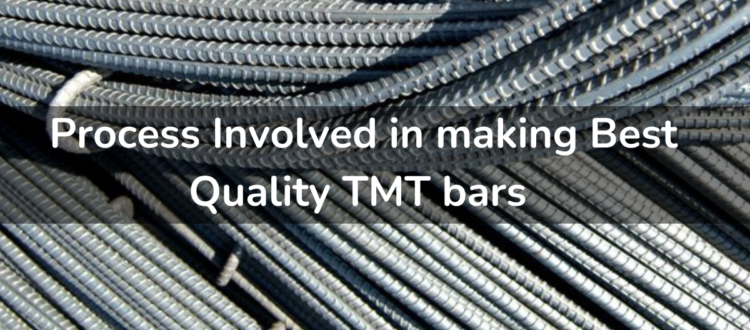Process Involved in Making Best Quality TMT Bars
Have You Ever Considered the Methods Used to Produce High-Quality TMT Bars?
Steel reinforcement bars are created via a technique called thermo-mechanical treatment, or TMT. By establishing a temperature difference between the heated inner core and cooler outer surface, the thermo-mechanical process used to manufacture TMT Rebars works effectively. TMT bars have incredible strength and anti-corrosive qualities because of the unique pearlite-ferrite encasement in tempered martensite produced by the thermo-mechanical processing. In addition to being a financially viable choice, they also offer more durability and ductility than traditional steel bars.
Let’s look at the steps in the production of reinforcement bars:
Rebar quality can vary depending on several variables, including the type of material used, the rolling mill used to shape the material, the equipment used to quench the material, and the tempering procedure.
Sourcing Raw Materials:
Getting the raw materials, such as coal, iron ore, dolomite, and limestone, is the first step. Iron scraps are used to make iron ore, and choosing the proper source is essential for producing rebar. Massive quantities of iron scrap are gathered and sorted. After that, the raw materials are processed in an electric arc furnace, traditional oxygen furnace, or contemporary induction furnace to change the steel’s composition. Certain chemicals can be added to or removed from steel depending on its ultimate chemical makeup.
Primary And Secondary Steel-Making:
Making the steel billets is the following stage. After being poured into a ladle, the molten steel is then used in a continuous casting process. In this procedure, molten steel is poured into moulds, where it cools and solidifies creating steel billets, which are long, rectangular shapes. The steel is thinned and lengthened as it passes through the rolling mill from the billet. The billets are then quenched, tempered, and cooled to produce TMT bars of various sizes and diameters.
Quenching:
The hot rolled bar passes through a water quenching system after leaving the final mill stand (which includes the roughing, intermediate and finishing stands), where the water sprays cause the surface of the rebars to quickly cool and solidify. The inner core remains heated and flexible while the outer surface becomes hard.
Tempering:
The core of the Rebars is still hot and continues to heat the surface after they have passed through the quenching mechanism. This causes the outer martensitic layer to become tempered, forming a structure known as “tempered martensite.”
Air-Cooling:
Finally, special cooling beds are used to cool down the TMT bars. As a result, the core cools till it reaches room temperature.
Always Choose the Best Quality TMT Rebars:
TMT is widely recommended in the construction industry. They are a very important building material because of the combination of numerous distinctive properties. Although there are many TMT bar manufacturers in India, for the past 50 years Birla TMT Steel has stood out as the country’s top manufacturer of TMT bars. This is underpinned by cutting-edge logistical technologies, a strong dealer network across India, and world-class production advances.

